Local butterfly count tallies 53 species but number of individuals is low
Peterborough Examiner – July 30, 2022 – by Drew Monkman
Viceroy, pearly-eye, white admiral, hobomok, and American lady. No, this is not a list of famous race horses but rather the names of five of the 105 species of butterflies that have been recorded in Peterborough County. Thanks to the wide range of habitat types, our diversity of butterflies is one of the highest in the province.
Butterfly-watching began to really catch on in the 1990s with the publication of field guides making identification much easier. In addition, the development of close-focusing binoculars and digital cameras with zoom lenses now allows for much easier observation and has nearly done away with the need to capture butterflies in a net.
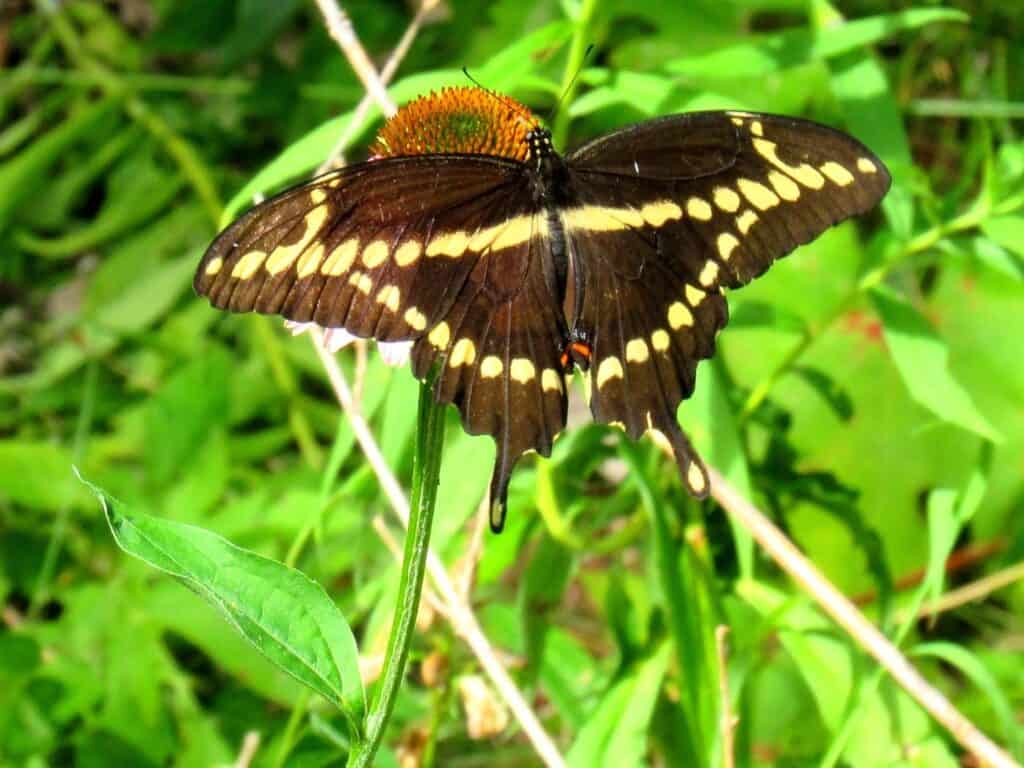
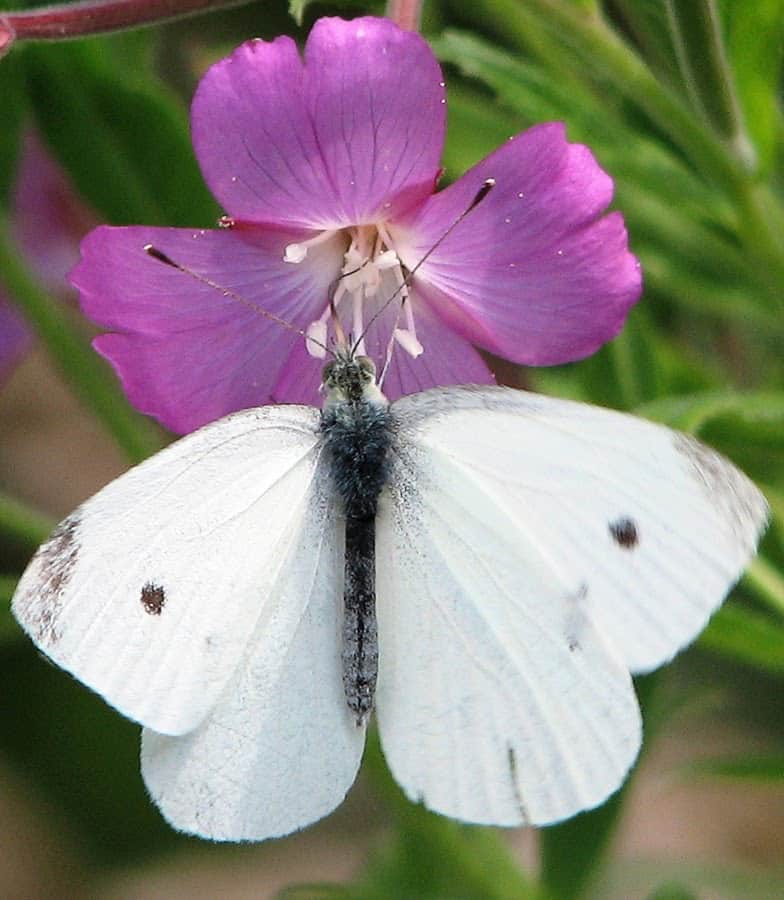
This growing interest in butterflies has had other spinoff effects, as well. Every summer, butterfly enthusiasts across North America spend a day in the field monitoring local population levels. Like Christmas Bird Counts, butterfly counts help us understand how butterfly populations are changing. Observers attempt to identify and count every individual butterfly seen within a circle measuring 24 kilometres in diameter. An average of 25 counts are held in Ontario each summer.
Our local butterfly census, known as the Petroglyph Count, is centered in Petroglyph Provincial Park. It takes place in mid-July, because early summer is usually the time when the greatest number of species can be found. This means, however, that species only seen in spring and late-summer are missed. The count circle includes butterfly-rich areas such as Jack Lake, Kashabog Lake, and Sandy Lake Road. This year’s count was held on July 23 with a record 28 observers taking part.
Organized by Jerry Ball and Martin Parker of the Peterborough Field Naturalists, the Petroglyph Count tallies more species than just about any other count in the province. Over its 23-year history, 76 different kinds of butterflies have been found. Among these are eight species of hairstreaks, five fritillaries, and 21 kinds of skippers. The most abundant butterflies of all are usually the Dun and broad-winged skippers. In fact, the Petroglyph Count has the distinction of recording more of these tiny butterflies – often in the thousands – than any count in North America.
But identifying skippers presents challenges. Often less than 3 cm in wingspan and resembling moths, they are usually coloured in dull tones of orange, brown, and black. To complicate matters, males are often different from females. Their perching posture is unique among butterflies in that the hindwings are opened at a wider angle than the forewings. This gives them a “jet plane” look.
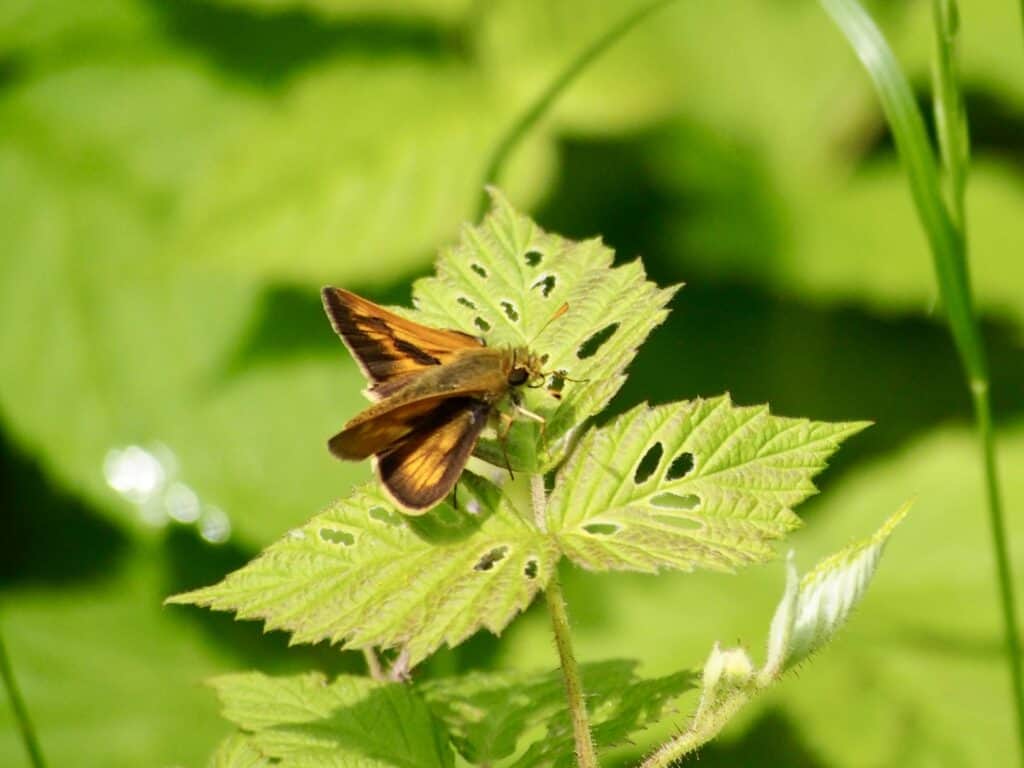
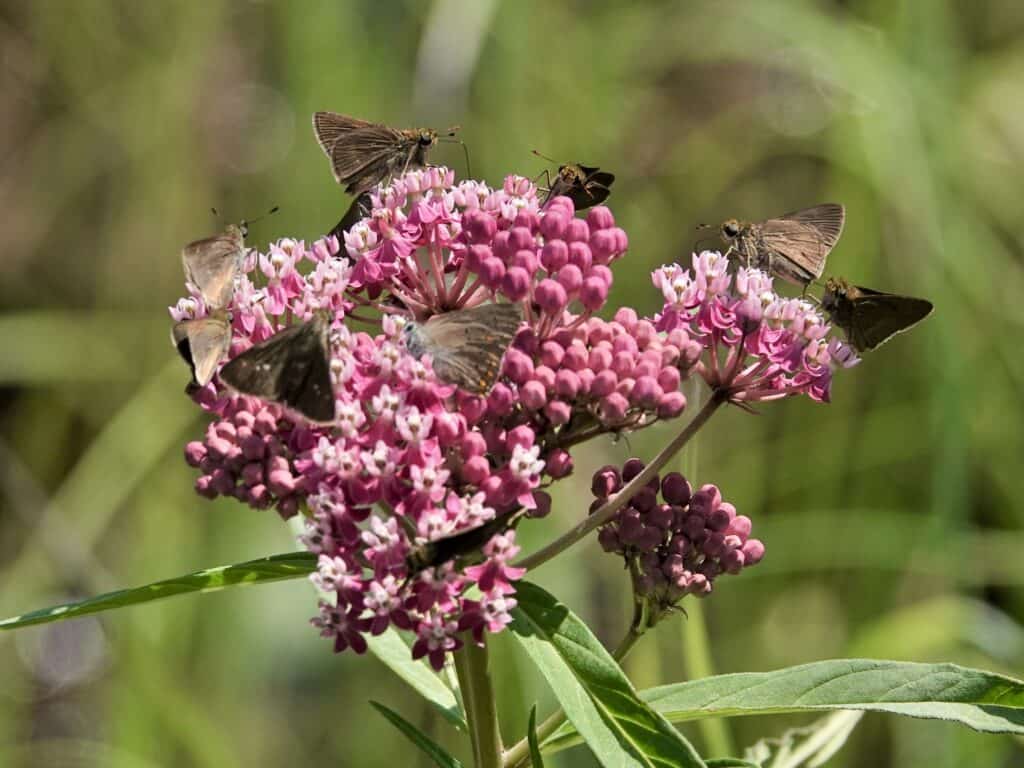
Low numbers
A total of 53 different species were recorded this year, which is about average. However, the number of individual butterflies tallied (2,240) was well below the average (about 3,800) and only half of last year’s total (4,387). According to Parker, all of Ontario’s counts are reporting low numbers this year. This may be related to fewer-than-average plants in flower, a somewhat cool spring – especially June nights – and even the recent windstorms. Count participant Larry Smith told Parker that after the May 21 derecho, his pond was covered with dead caterpillars. Also worrisome – and possibly related – is the well-documented global decline in insects.
Monarch numbers, too, were low. Only 107 were counted which is below the 10-year average of 159. Their numbers do tend to fluctuate, however, with only four individuals found in 2016 compared to a record 472 in 2019 and 475 in 2021. But just in the last week, I’ve heard from several people that monarch numbers are rising quickly.
Only two red admirals were tallied, and just a single painted lady. Both of these butterflies migrate north from the United States into Ontario each spring and there is a great deal of annual variation in numbers.
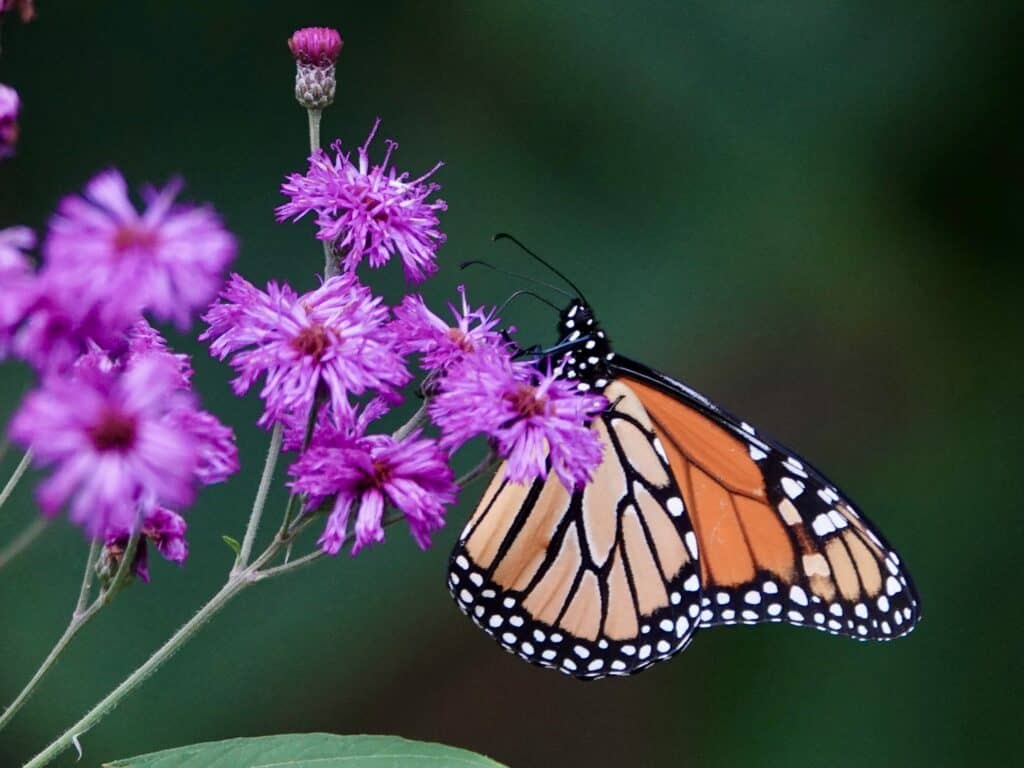
Jerry Ball
Much of our recent knowledge of Peterborough County’s butterflies can be attributed to the observations made by Jerry Ball. Ball has been scouring the County in search of butterflies for over 25 years. He has also kept very detailed records. He was the first person to find local populations of mulberry wing skippers and to discover they’re actually quite common. He also found the County’s first variegated fritillary, satyr comma, and common buckeye. Ball also predicted almost 20 years ago that giant swallowtails would expand their range into Peterborough County. Once restricted to southwestern Ontario, they are now a common butterfly of the Kawarthas.
Jerry Ball’s contributions go further, still. As Martin Parker told me, “Jerry has drawn attention to Sandy Lake Road as one of Ontario’s premier butterfly-watching destinations. People come from across the province to visit the area.”Located about 40 km north of Havelock on County Road 46, Sandy Lake Road has varied habitat types which include a thousand acres of sedge marsh. All of the many butterfly species that lay their eggs on sedges can be found here. This includes many kinds of skippers. Among other species of note are bog copper, brown elfin, and the harvester butterfly. Harvester caterpillars are actually carnivorous, something that is unique among Ontario’s butterflies.
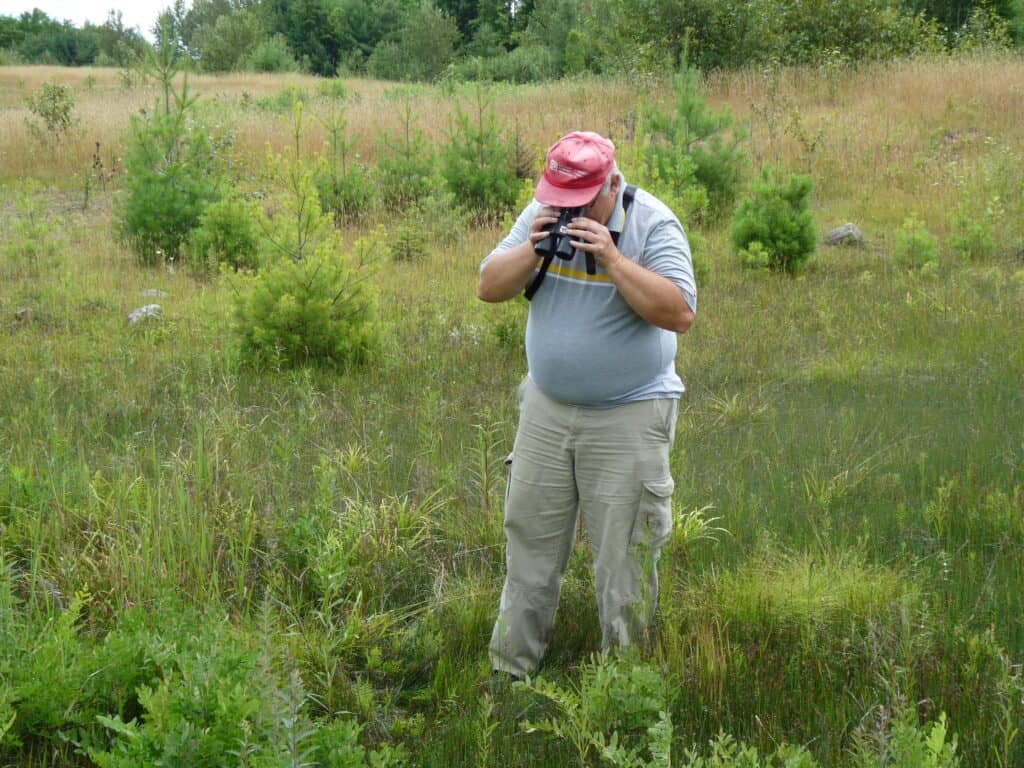
Complete results
The 2022 Petroglyph Butterfly Count results are as follows: Mid-summer tiger swallow-tail (5), cabbage white (15), clouded sulphur (44), orange sulphur (3), pink-edged sulphur (28), bog copper (8), Acadian hairstreak (12), coral hairstreak (36), banded hairstreak (3), hickory hairstreak (1), Edward’s hairstreak (1), striped hairstreak (4), gray hairstreak (12), eastern tailed blue (2), summer azure (20), northern azure (1), great spangled fritillary (76), Aphrodite fritillary (21), Atlantis fritillary (1), meadow fritillary (2), pearl crescent (14), northern crescent (103), questionmark (3), eastern comma (10), gray comma (2), green comma (1), Compton tortoiseshell (2), mourning cloak (2), American lady (5), painted lady (2), red admiral (2), white admiral (7), viceroy (3), northern pearly-eye (12), eyed brown (44), little wood-satyr (6), common ringlet (2), common wood-nymph (53), monarch (107), columbine duskywing (38), Delaware skipper (44), common sootywing (1), least skipper (66), European skipper (105), Peck’s skipper (19), tawny-edged skipper (5), crossline skipper (18), long dash (7), northern broken-dash (21), little glassywing (3), mulberry wing (37), broad-winged skipper (229), Dion skipper (18), and Dun skipper (892)
Total species (53), Total individuals (2,240), Participants (28)
How does the number of butterflies and other pollinators seem in your gardens this summer? Email me at dmonkman1@cogeco.ca.
CLIMATE CHAOS UPDATE
Hope: Northland Power is proposing a major project to convert the Marmora Mine property into a 400-megawatt pumped storage facility. The project would commit the site to long term clean energy production. Pumped storage stores and generates electricity by pumping water into an upper reservoir when energy demand and rates are low and then allows it to flow down through the same pump/generator system to generate electricity when it is needed by the grid. If approved, the facility would offer instantaneous power, providing important support for Ontario’s grid. See https://tinyurl.com/yc7bsbkb
Upcoming events: On August 8 at 7 pm, Jacob Rodenburg will be the guest speaker at 4RG Meets. Rodenburg is an award-winning educator and Executive Director of Camp Kawartha. He will help you refresh your connection to nature by introducing you to a whole suite of activities from his new book “The Book of Nature Connection: 70 Sensory Activities For All Ages”. From creating micro-trails to “drawing sound”, he will explain how to bring all of your senses into play. Register for this Zoom event at https://tinyurl.com/3nhnm6fm
Carbon dioxide: The atmospheric CO2 reading for the week ending July 23 was 418.43parts per million (ppm), compared to 417.14 ppm a year ago. The highest level deemed safe for the planet is 350 ppm. Rising CO2 means more climate chaos and increasingly severe storms ahead.
Take action: To see a list of ways YOU can take climate action, go to https://forourgrandchildren.ca/